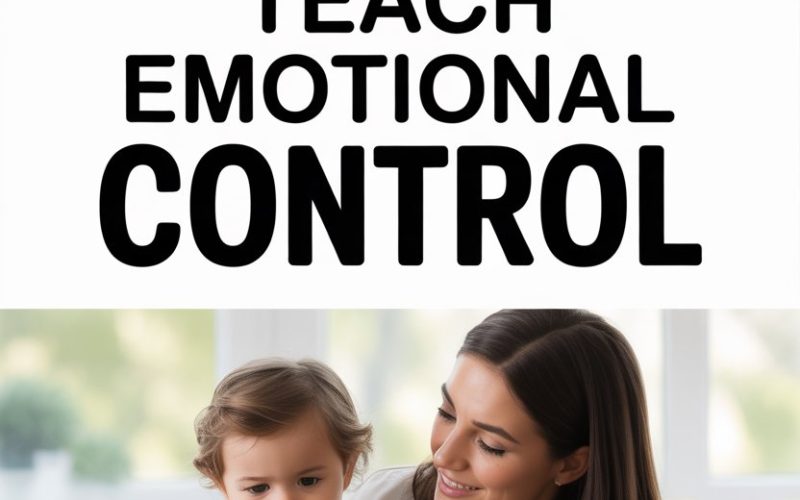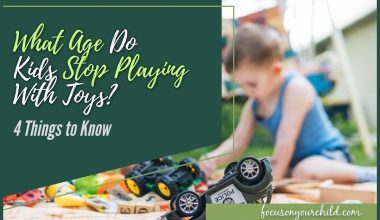If you have a child under seven, chances are you’ve witnessed a tantrum that could rival a small thunderstorm for sheer drama.
Shoes flying, tears gushing, the whole works—sometimes in the middle of the pasta aisle.
Before you start looking for a trapdoor, take a breath: tantrums aren’t just a nuisance. They’re a golden parenting opportunity to help your child learn emotional control, even if you’d rather be anywhere else.
Tantrums Are Normal, Not Nasty
Children are not tiny adults with impulse control and a handy inner dialogue. Developmentally, little ones have brains that are still under construction, especially the parts responsible for emotional regulation.
According to Harvard’s Center on the Developing Child, kids operate mostly from their “emotion brain” until the reasoning part matures. Cue the shrieks over the wrong color cup.
That’s not misbehavior. That’s a developing brain wrestling with a tidal wave of feelings and limited communication skills.
Even older kids have occasional meltdowns when overwhelmed.
Your Response Matters More Than You Think
It’s tempting to match your child decibel-for-decibel. (Ever tried it? Not recommended.) But your calm—or lack of it—sets the emotional temperature.
Research confirms that when parents keep their cool, children are more likely to calm down faster and learn to do the same.
You’re not expected to be a Zen master. If you need to count to ten or mutter under your breath about how you should have had that second coffee, do that first.
Model the emotional regulation you want your child to build. Monkey see, monkey do.
Why Saying “Calm Down!” Never Works
Picture being in a rage and someone chirping, “Relax!” Did it help, or did you want to throw a sock at them? Kids are no different. In the heat of a tantrum, their brain is not open for logical business.
Telling them to calm down is about as effective as commanding the rain to stop.
Instead, focus on connection. Get down on their level, keep your voice low, and offer empathy. Try, “That was really upsetting, wasn’t it?”
It sounds simple—and maybe a bit touchy-feely if you grew up with “stiff upper lip” parenting—but according to child psychologist Dr. Laura Markham, labeling and acknowledging feelings helps children move from emotional chaos back to calm.
Name It to Tame It
One powerful trick from the parenting toolbox: help your child put words to their feelings. This isn’t about excusing behavior, but about giving kids a “feelings vocabulary.” Try phrases like:
- “It looks like you’re mad because we can’t have ice cream for breakfast.”
- “You’re sad that it’s time to leave the playground.”
Daniel Siegel, author of The Whole-Brain Child, calls this “Name it to tame it.”
Naming feelings helps your child process them, feel understood, and—over time—handle strong emotions more skillfully. It’s like giving their brain training wheels for emotional balance.
Tantrum Tactics That Build Emotional Control
Here’s where the real action happens. When your child’s world is ending because you zipped their coat “wrong,” try these strategies on for size.
Stay close but calm
Your job isn’t to squash the feeling or abandon ship. Sit nearby, make yourself available, and offer a comforting presence.
Sometimes, a gentle hand on the back or a soft voice is enough. If your child doesn’t want to be touched, just stay close enough that they know you’re there.
Create a safe space
If you’re at home, a cozy corner with a pillow or favorite teddy can be a “calm zone.” Out in public? Try to move to the side, but don’t drag your child off unless absolutely necessary.
Safety first, dignity a close second.
Offer choices (if possible)
When the emotional storm is passing, give small, manageable choices: “Would you like to sit in your room or on the couch to calm down?”
This gives your child a sense of control, which is often what’s missing during a tantrum tornado.
Keep explanations simple
During a full-scale meltdown, this isn’t the time for TED Talks on why bedtime exists. Save the lessons for later, when everyone’s calm. Short, soothing phrases work best: “I’m here. We’ll get through this.”
Tantrums Teach Problem Solving
Once the fireworks fade, talk it through. Ask simple questions: “What made you so mad?” “What could we do next time?”
Encourage brainstorming. Maybe your child can come up with ideas for what to do when they feel frustrated, like stomping their feet, squishing a stress ball, or asking for a hug.
The point isn’t to avoid all big feelings (impossible!), but to give your child tools to manage them.
Don’t expect instant mastery. It takes dozens (okay, hundreds) of tantrums for these lessons to stick.
That’s not failure—it’s practice.
Praise Effort, Not Perfection
Caught your child pausing before launching into a wail? Saw them take a deep breath before shrieking about the injustice of broccoli? Heap on the praise.
Research from Stanford University shows that praising effort (“You worked hard to calm down!”) helps children grow grit and resilience.
Save the ticker-tape parade for when your child tries to handle frustration in a new way, not just for perfect behavior. Every step counts.
Model Your Own Emotional Control
It’s not about pretending you never feel angry or stressed. (Who could?) Instead, narrate your own emotional process in front of your kids, at least some of the time.
“I’m really frustrated right now, but I’m going to take a few deep breaths to calm down.”
This isn’t Oscar-worthy acting—it’s coaching in real time. Your children are always watching (especially when you wish they weren’t).
Consistency Is Boring, But It Works
Kids thrive on predictable routines and responses. If tantrums earn attention, treats, or a free pass from rules, you’re in for encore performances.
If you calmly acknowledge feelings but stick to boundaries, your child learns two things: emotions are valid, and limits still matter.
Yes, you’ll have to repeat yourself more times than feels reasonable. That’s not because your child is plotting your downfall—it’s just how learning works.
Don’t Take the Bait
Ever felt like your child’s tantrum was personally aimed at your last nerve? It’s easy to get sucked into the drama, especially if you’re tired, stressed, or surrounded by the judgmental stares of strangers.
Remind yourself: this isn’t a referendum on your parenting. It’s a child learning how to handle big, messy emotions.
Public meltdowns are mortifying, but seasoned parents know the truth—next week, it’ll be someone else’s toddler losing it at the bakery.
When to Seek Extra Help
All kids lose their cool, sometimes spectacularly.
But if tantrums are lasting longer than 15 minutes, involve aggression, or happen constantly, it might be time for a chat with your pediatrician or a child psychologist.
The American Academy of Pediatrics recommends reaching out if you’re concerned. There’s no shame in asking for help—you’re just building the best toolkit for your child (and your own sanity).
What If You Lose Your Cool?
Newsflash: even the best parents have snapped, yelled, or declared “No more biscuits for life!” in a moment of rage.
Repair is more important than perfection. Apologize to your child, briefly explain, and move forward.
“Sorry I shouted. I was frustrated, too. Next time, I’ll try to use my calm voice.”
Repairing after a blowup teaches your child that everyone makes mistakes, but strong relationships bounce back.
Little People, Big Lessons
Tantrums are exhausting, frustrating, and at times hilariously illogical. (No, you can’t wear the dog’s collar to school.) But each meltdown is a lesson in progress.
Your child isn’t trying to make your day harder—they’re trying to figure out how to be a person in a world full of rules and disappointments.
And those moments when you sit together, breathe, and weather the storm? That’s the stuff that builds lifelong emotional strength—one wobbly tantrum at a time.
Brave on, parent. You’re not just surviving tantrums. You’re raising a kid who will know how to handle life’s curveballs—without hurling their shoes across the room. (Well, most of the time.)





